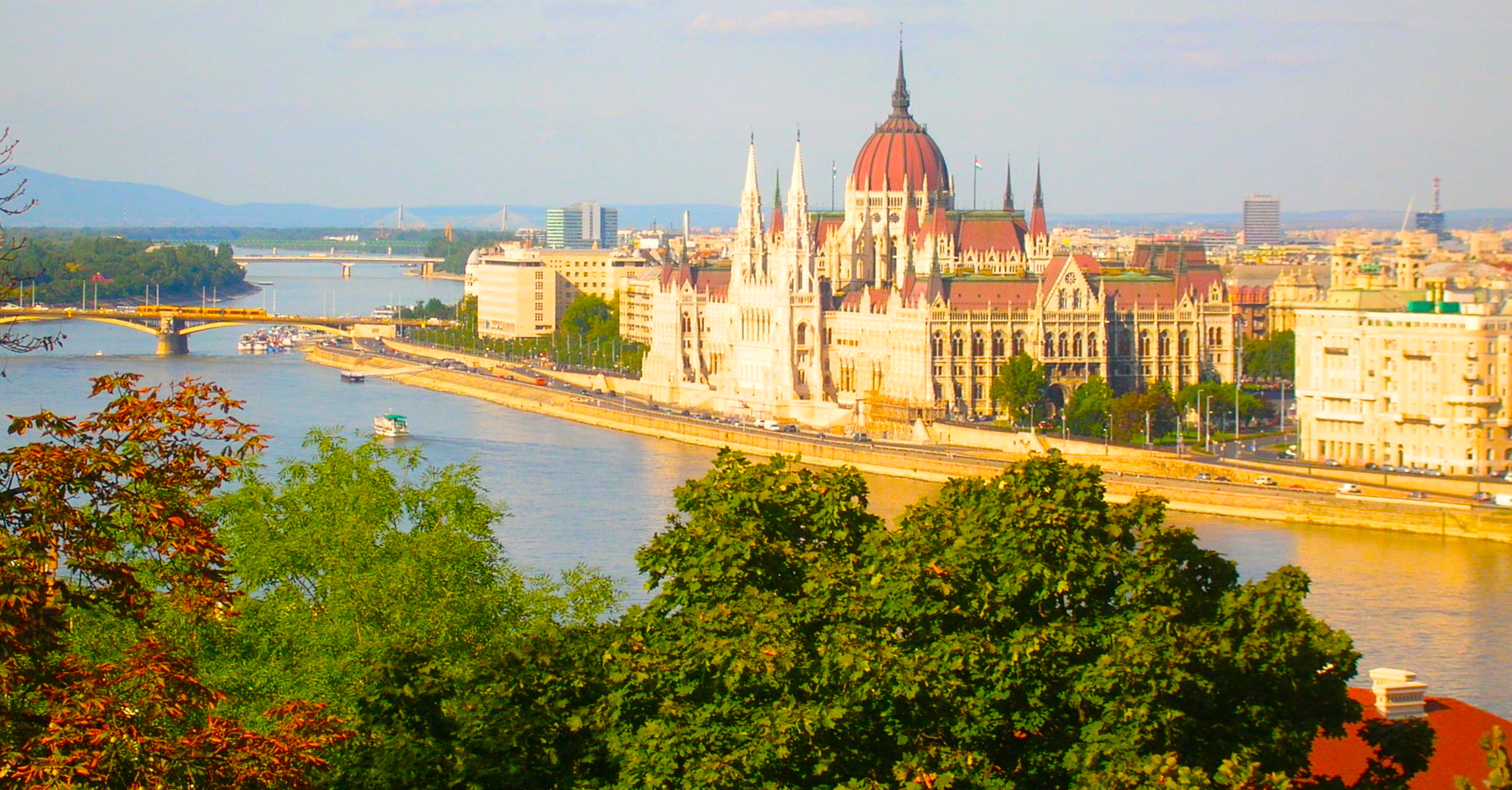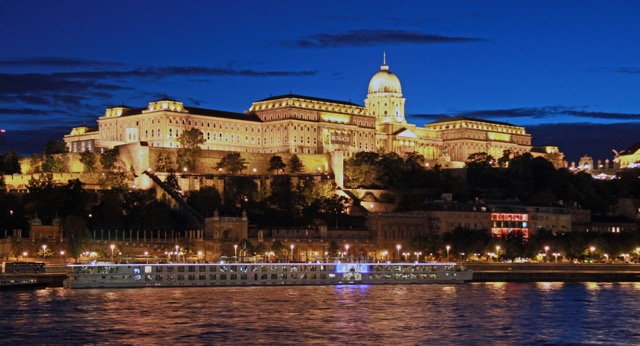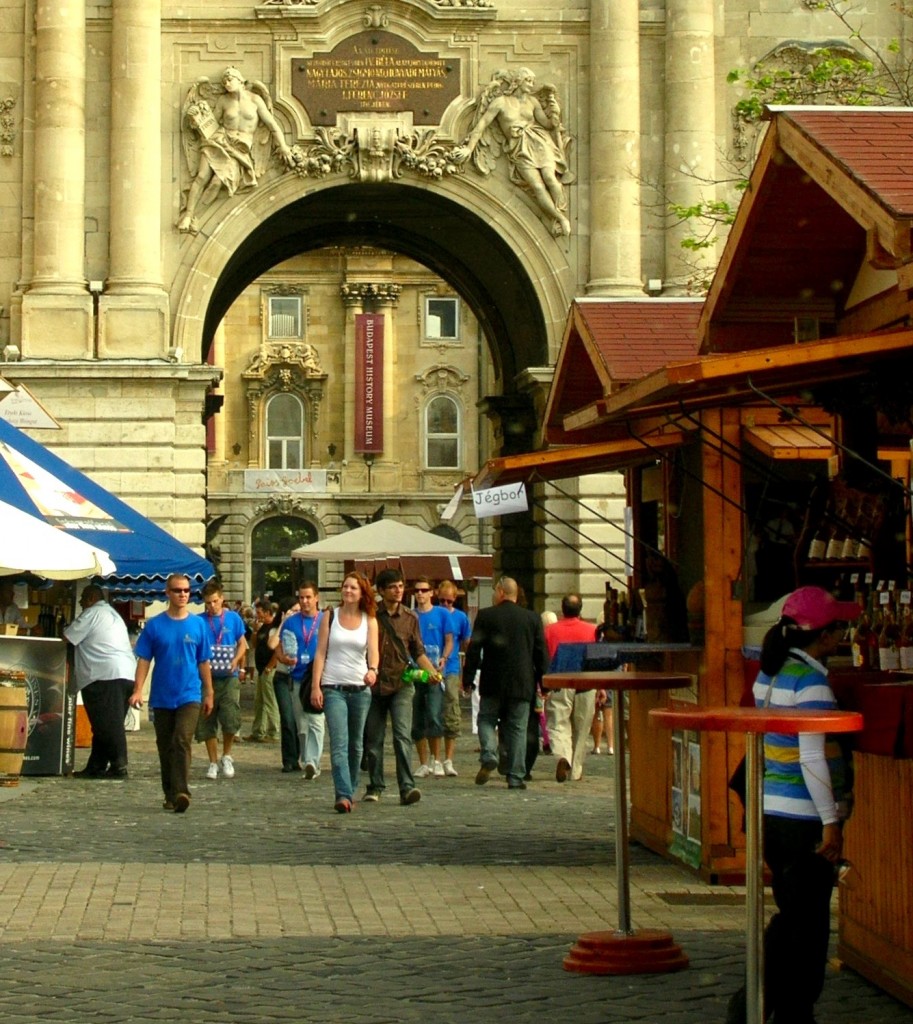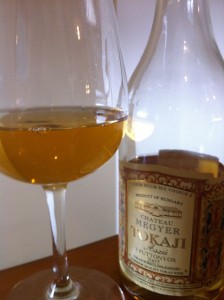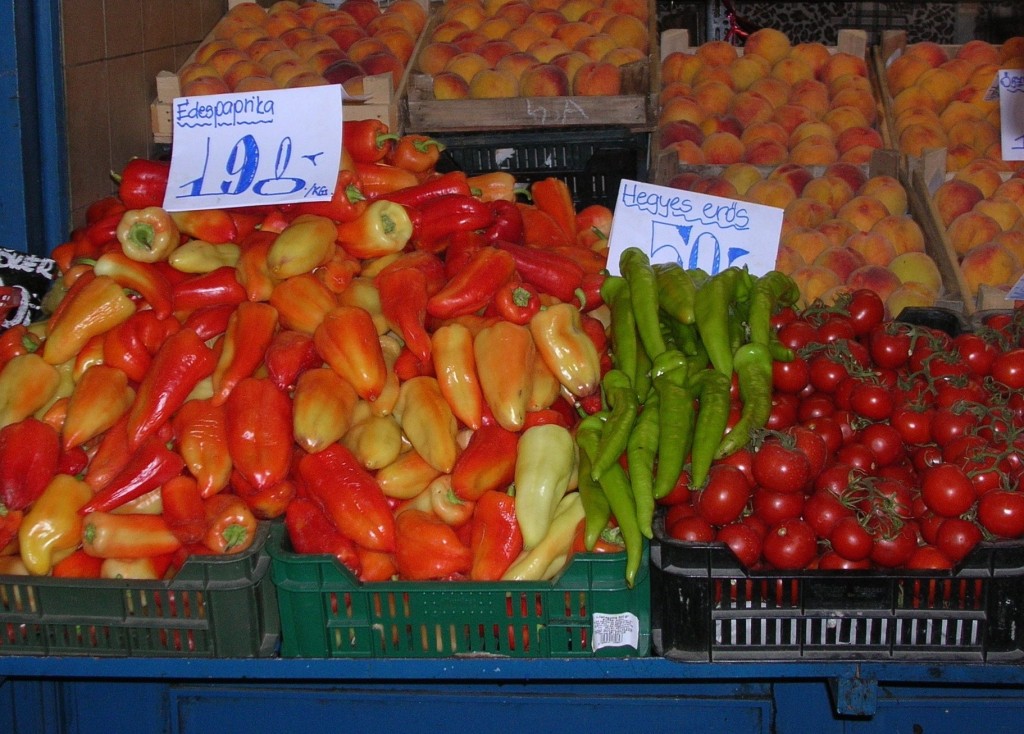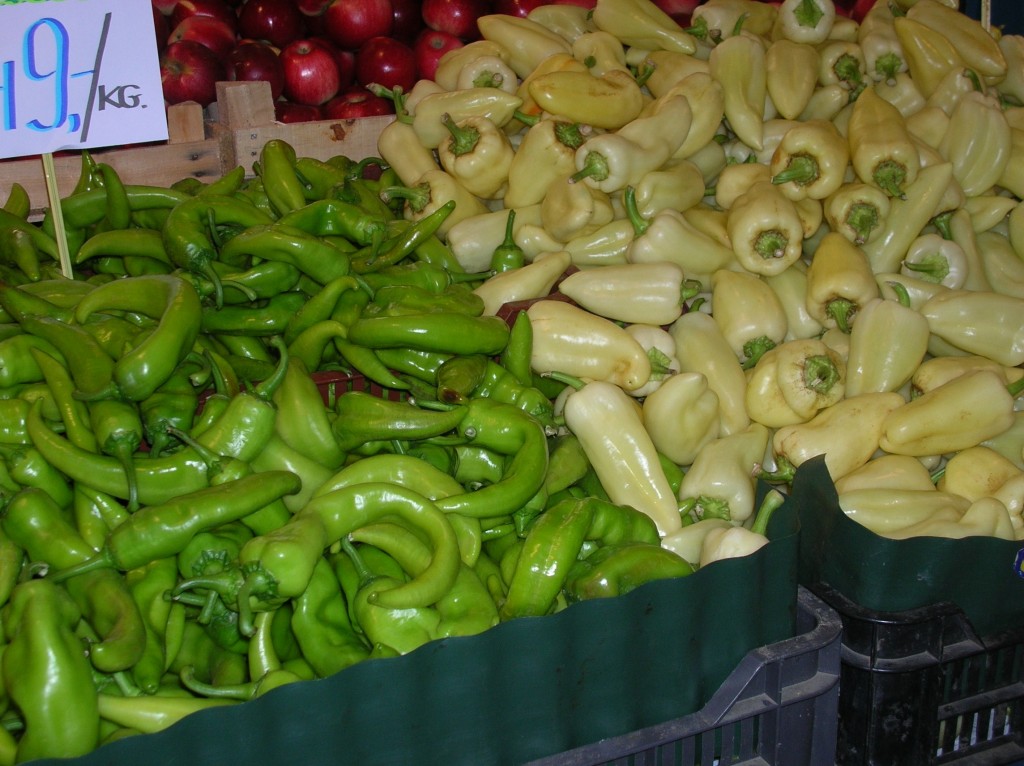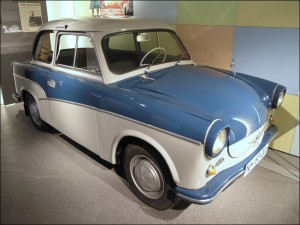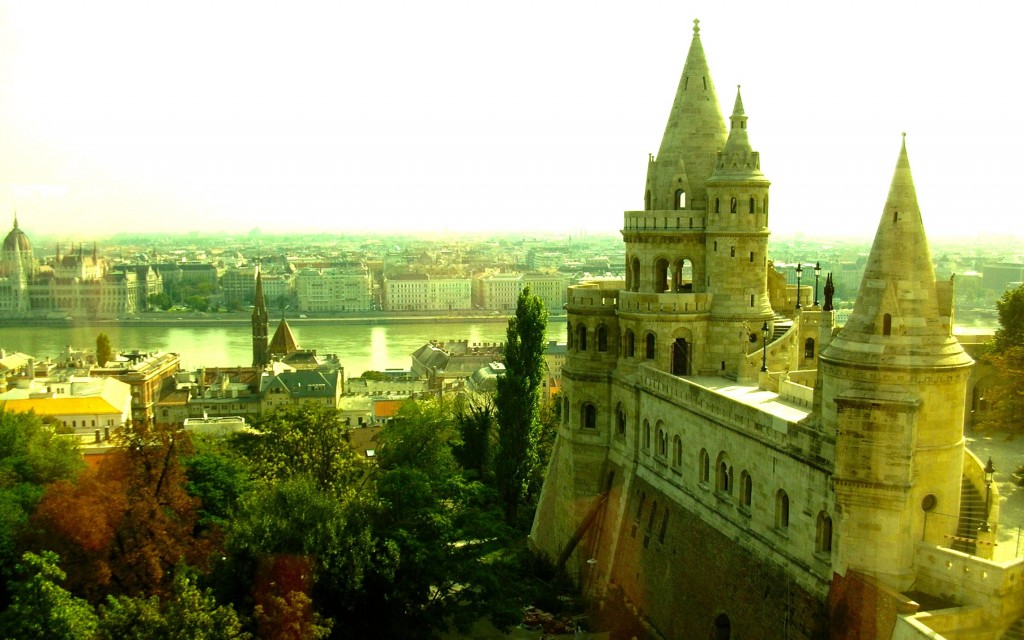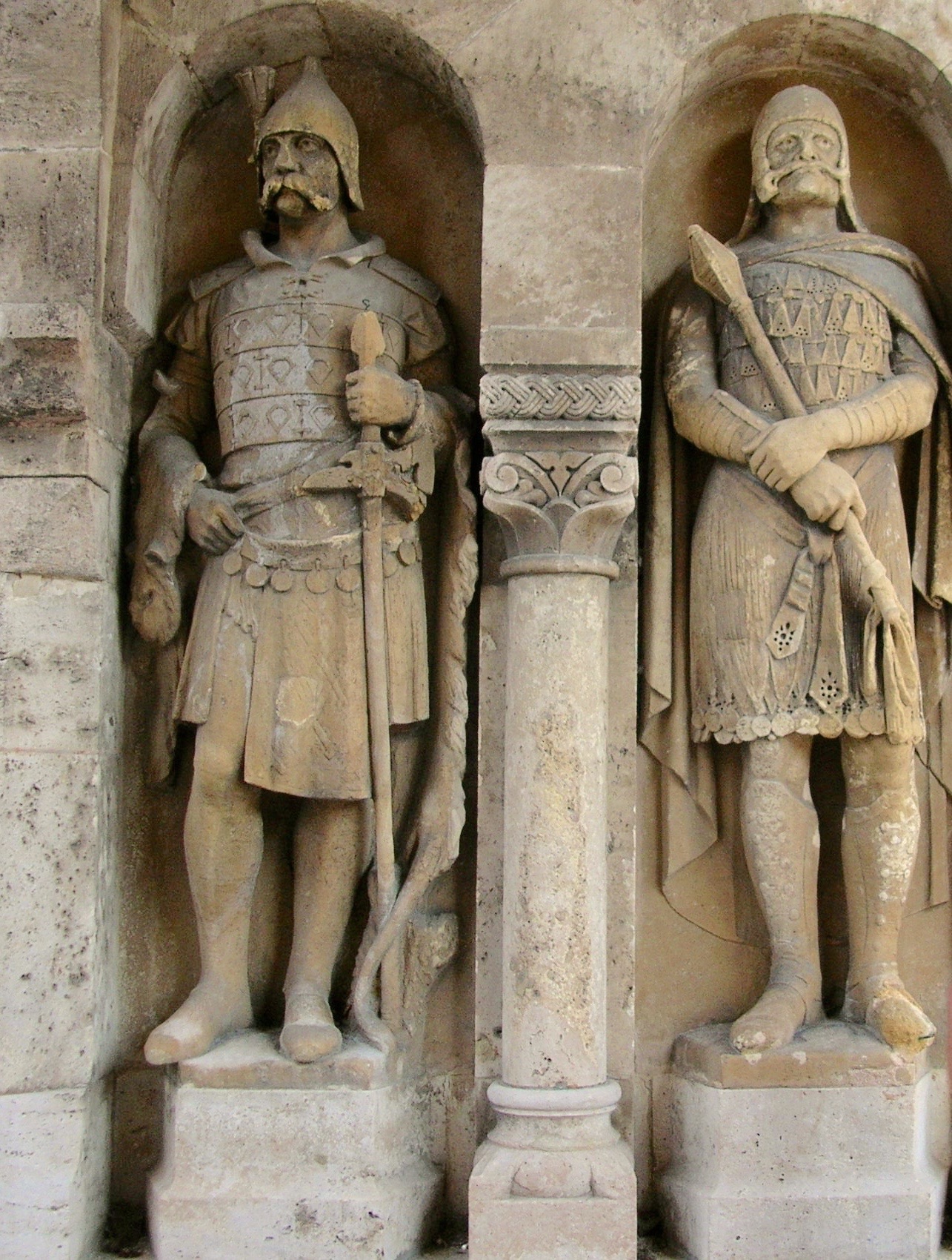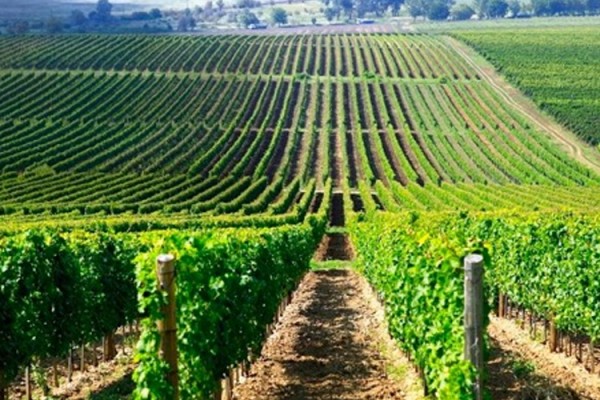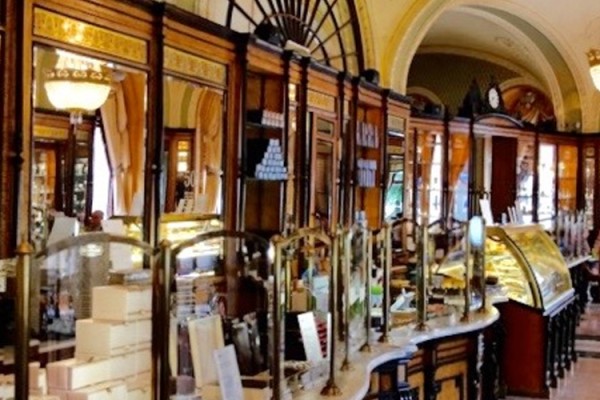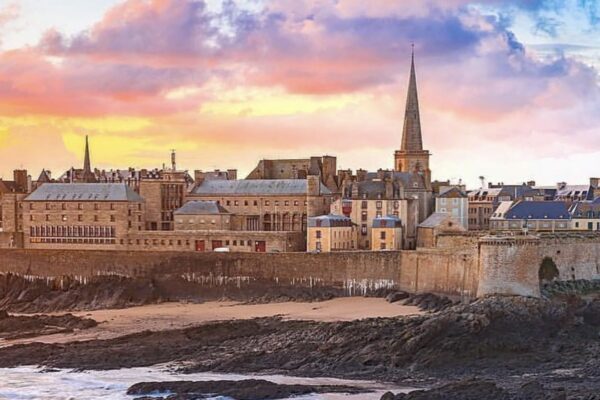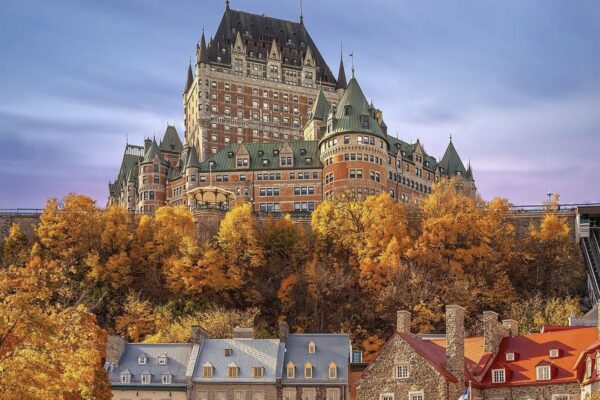Budapest: Neither East or West
Text & photos by Marla Norman
“If you come from Paris to Budapest, you think you are in Moscow,” Hungarian composer Györg Ligeti is quoted as saying. “But if you go from Moscow to Budapest, you think you are in Paris.”
So, Budapest lies somewhere in between – not East, not West – a city that’s forged it’s own unique identity and spent centuries in the process. I try to sort out a fundamental history at the the Magyar Nemzeti Múzeum (Hungarian National Museum.) I watch a few films and wander through quiet rooms of impressive archives and life-like displays.
Then suddenly a piercing voice breaks the silence: “You must leave now!” I whirl around to face a tall, uniformed woman. She looks me over, then smiles broadly. “It’s 6:00 and we’re closing,” she says, nodding towards the door. I glance at my watch and realize I’ve spent well over four hours in the National Museum – and could have easily spent an entire day.
The National Museum portrays the earliest settlements in Budapest, beginning in 400,000 B.C., including the Roman occupation. In the 9th century, the first Magyar Királyság (Kingdom of Hungary) is documented, along with the construction of the original fortress castle on Buda Hill. The Ottoman pillage and capture of Buda in 1526 is chronicled, along with the 150 years of Turkish domination. Later, when the Ottomans were overthrown, Budapest became a major European capital and the museum conveys the elegance and sophistication of the city during its golden years – the 18th and 19th centuries. Then the heartbreak of two World Wars…It’s a long, engrossing story…
ROYAL BUDA
Split by the Danube, Buda sits on a hill overlooking the river and, with it’s magnificent Royal Palace, literally crowns the city. Pest, lies below, but is also quite resplendent with its towering spires, domed Parliament building, wide boulevards and Art Nouveau architecture. A stroll on either side of the Danube will yield more than enough attractions to support Budapest’s claim as one of Europe’s most beautiful cities. Numerous UNESCO World Heritage Sites add credibility as well.
Climbing through Pest up the steep hill to Buda, I’m even more impressed with the Royal Palace when I discover it’s been rebuilt numerous times. “At least five times,” says the tour guide, waving his fingers emphatically. “But the destruction after World War II was the worst — nothing but piles of rubble.”
After the war, attempts to unearth the castle remains became one of the largest excavations in Europe. With painstaking effort, archaeologists were able to recover both the original defensive walls and royal chambers. The ramparts surrounding the medieval royal residence were re-created. Finally, by the early 1960’s, the Királyi Palota was completely restored and again stands proudly at the crest of Buda Hill.
Today, the palace also houses the Magyar Nemzeti Galéria, which showcases an unequaled collection of Hungarian fine art. Especially notable are works from the romantic painter Mihály Munkácsy and the Impressionist Pál Szinyei Merse. A large collection of sculptures by native Hungarian artists is on view as well.
After touring the castle and National Gallery, I’m ready for a break. Coincidentally, the Budapest International Wine Festival is going on at the same time, on the castle grounds. Now in its 25th year, the festival features not only Hungarian wines – which are exceptional – but the wines of 15 other countries — well over 5,000 wines. Read more about Tokaji, Hungary’s best-loved wine in this issue of TCO.
I dive into the wine tastings and the mouth-watering food: Grilled and cauldron-cooked dishes, crispy strudels, Hungarian twisters (spiral pastry), corn cakes with plum jam and regional cheeses. Hungarian jazz ensembles and traditional folk dancers entertain throughout the day and on into the evening. It’s a feast for all the senses!
If you can’t time your trip to Budapest to coincide with the Festival, you can still sample a wide-range of Hungarian wines at the Magyar Borok Háza. The Háza is a combination museum and wine bar. Visitors take a two-hour, self-guided tour through the cellar, which has more than 700 wines on display. Some 50 outstanding wines are open for sampling. In the event you become a little too enamored of Hungarian wines, the beautiful Budapest Hilton sits, conveniently, right across the street.
PRETTY PEST
It wasn’t until the 19th Century that the first permanent bridge was constructed across the Danube – thus finally uniting Buda Hill with the city of Pest. Budapest now has many such bridges, but the Széchenyi Chain Bridge was the first and remains a stunning architectural achievement, as well as one of Budapest’s loveliest adornments. At the time of its completion, the bridge was regarded as an engineering wonder. Massive stone lions at each end of the Chain Bridge were carved by Hungarian sculptor, Marschalko János – another tribute to the extraordinary construction and a symbol of national pride.
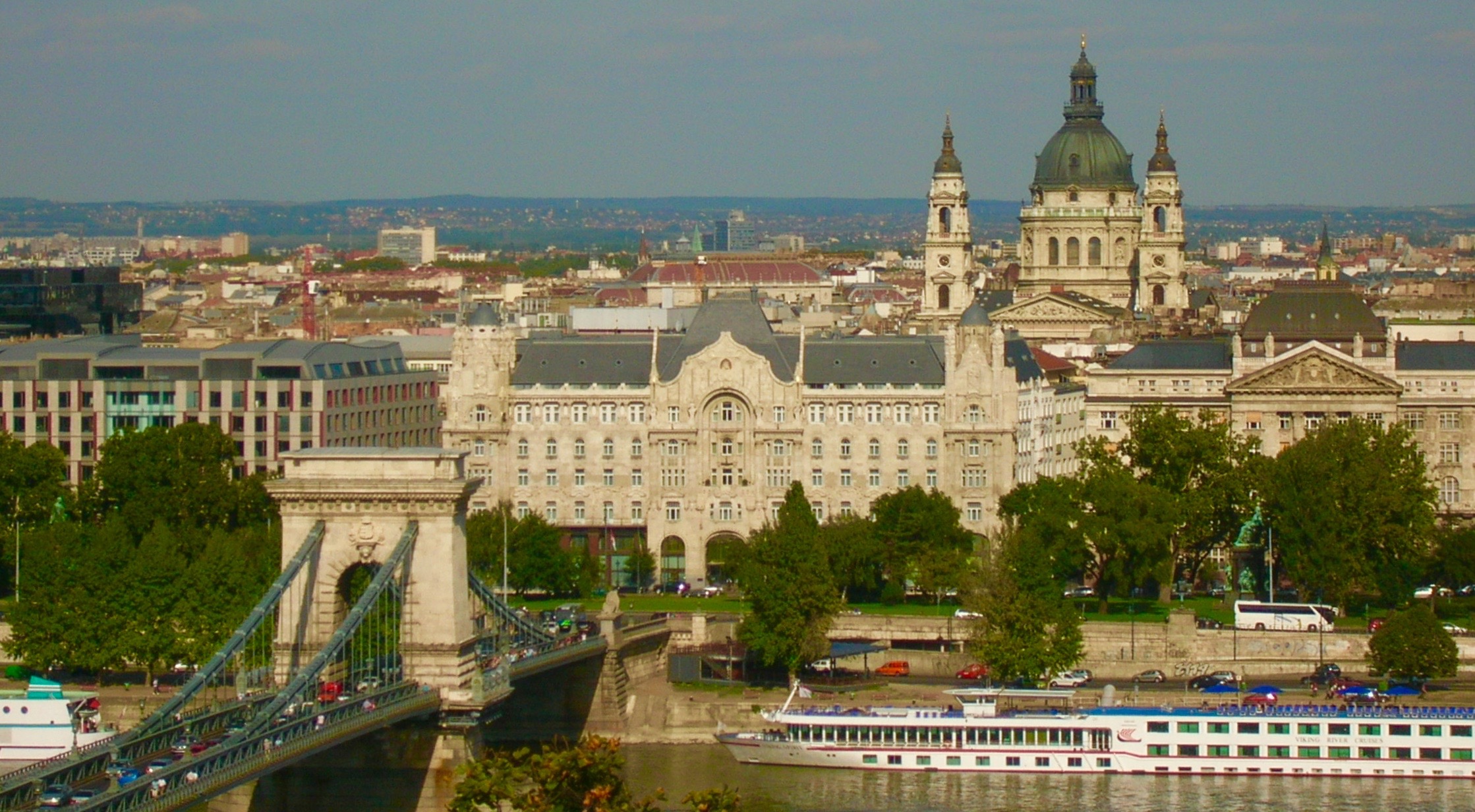
The Széchenyi Chain Bridge, an architectural marvel that first united Buda with Pest, and the towers of St. Stephen’s Basilica.
Early one morning, I greet the ferocious lions and then walk across the Chain Bridge. I take my time and savor the panoramic views of Buda Hill and the colossal, yet artful-looking Parliament buildings that loom ever larger as I approach Pest. The constant activity of cruise and cargo ships running along the Danube is fascinating as well.
It’s a bit of a walk from the Chain Bridge to the Országház (Hungarian Parliament Building.) But my slow approach helps me enjoy the intricately-designed, fin de siècle structure all the more. Built by hundreds of workers between 1885 -1902, the Országház is crowned by 24 towers and a single tremendous central dome. Inside are 691 rooms, 10 courtyards, and 29 staircases.
In her novel The Historian, Elizabeth Kostova writes: “It was neither quite Western, nor Eastern like Istanbul, nor for all its Gothic architecture, northern European. I stared out…at a splendor wholly individual.” Kostova’s apt description demonstrates why the Országház has become one of the most popular tourist destinations in Hungary. Lines to enter the building for tours can stretch for blocks. If you’re planning to visit, be sure to make reservations well in advance.
The other architectural tour de force accenting the Pest skyline is the Szent István Bazilika (St. Stephen’s Basilica.) The gargantuan church holds over 8,500 people. I marvel at the wealth of mosaics, altarpieces, statues and 150 different kinds of native Hungarian marble used to create this impressive structure. Climb 364 steps or take the elevator, as I did, to the top of the cupola. Views, as you’d expect, are nothing short of heavenly.
A few blocks away from St. Stephen’s is Europe’s largest synagogue, Nagy Zsinagóga. Hungarian native son Franz List and French composer Camille Saint-Saëns played the original 5,000-pipe organ in 1859. During World War II, the synagogue was bombed by Nazi forces then later used as a stable. After the fall of the Soviet Empire and Hungary’s return to democracy, reconstruction began, largely funded by a $5 million donation from Hungarian Jewish American Estée Lauder. If you visit, be sure to notice the frescoes by Hungarian artist Frigyes Feszi and the weeping willow made of metal in the courtyard behind the synagogue – a touching memorial to Holocaust victims.
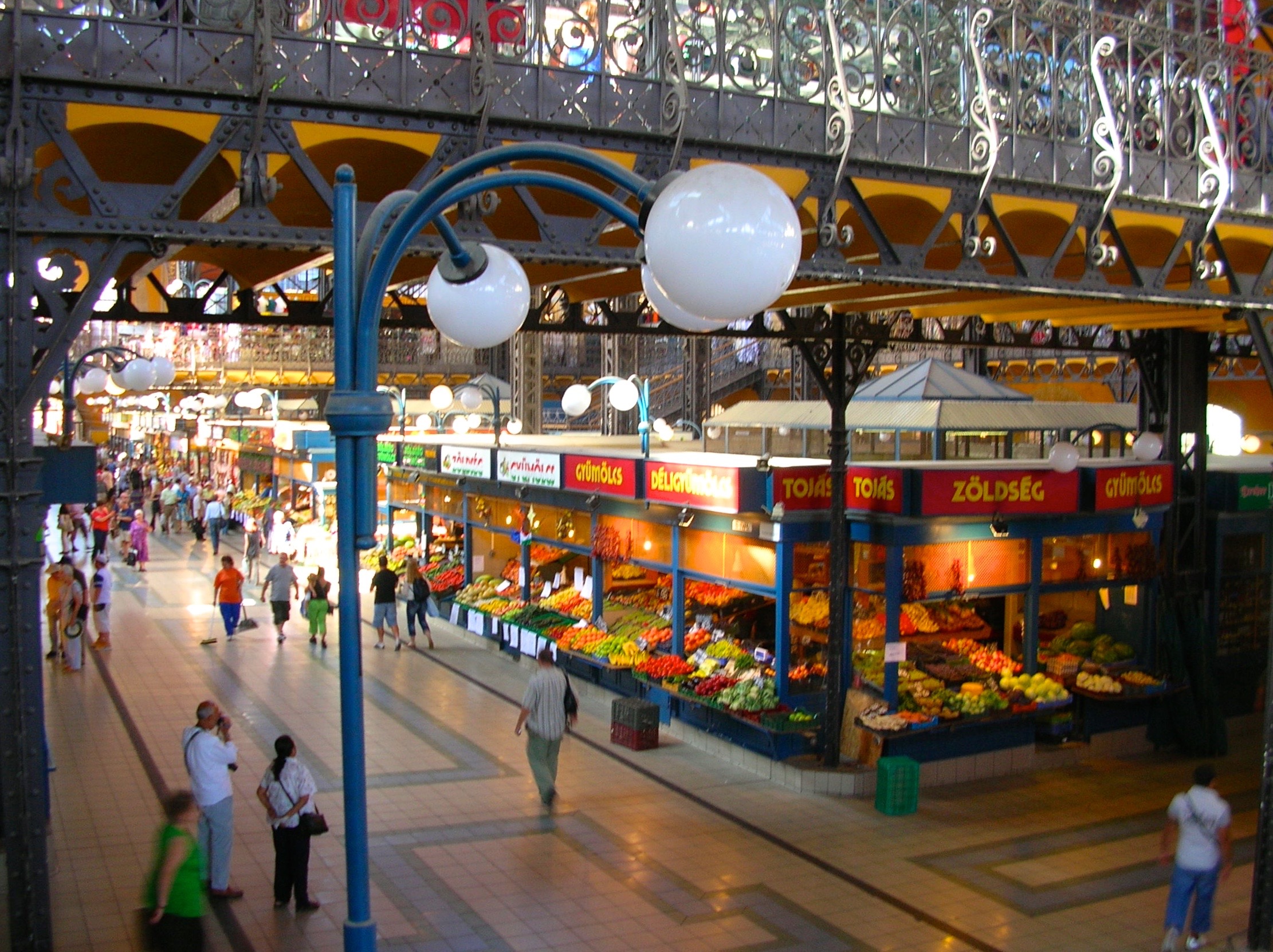
The Nagycsarnok (Great Market Hall) is 108,000 square feet – filled with produce and lots of peppers!
PAPRIKA, PEPPERS & ENDLESS PICKLES
I decide to duck into the Nagycsarnok (Great Market Hall) for a quick treat. But the mammoth hall is so interesting, I wind up spending several hours exploring and snacking! The exterior of the market is mesmerizing, with its eye-catching Zsolnay roof tiles and gorgeous brick. First opened in 1896, the interior is 10,000 square meters or approximately 108,000 square feet. Stalls with an astounding variety of goods fill three full stories.
The first floor is jam-packed with meats, spices and vegetables. Salamis, dried meats, whole pigs and fish are also on display. And peppers by the bushel! Long red peppers (mild), long yellow peppers (sweet), tiny pale yellow (very sweet), small red peppers (hot), large tomato-shaped peppers in yellow, green, orange and even tomato red. Strings and strings of dried peppers festoon entire walls. Along with the peppers are a dizzying number of paprika choices – literally hundreds – packaged in cute ceramic jars, glass vials, or tourist-friendly assortments in small cotton bags.
The second floor has charming cafés and tiny eateries, as well as souvenir shops. The Hall is filled primarily with local residents, but the market is clearly a tourist destination as well. I chose a café specializing in Goulash with fresh bread on the side. I leave stuffed and longing for a nap, but continue on to the basement to try out the incredibly inventive Hungarian pickles made from: cauliflower, cabbage, beets, tomatoes, garlic and even cucumbers.
LIBERTY VERSUS TRABANTS
Visible almost anywhere in Budapest is the 130-foot-high Szabadság-szobor (Liberty Statue), which stands on Buda Hill in the Citadella, south of the Royal Palace. The statue depicts a young girl holding a palm leaf. Erected in 1947, the monument was created in remembrance of the Russian soldiers who died liberating Hungary from Nazi Germany.
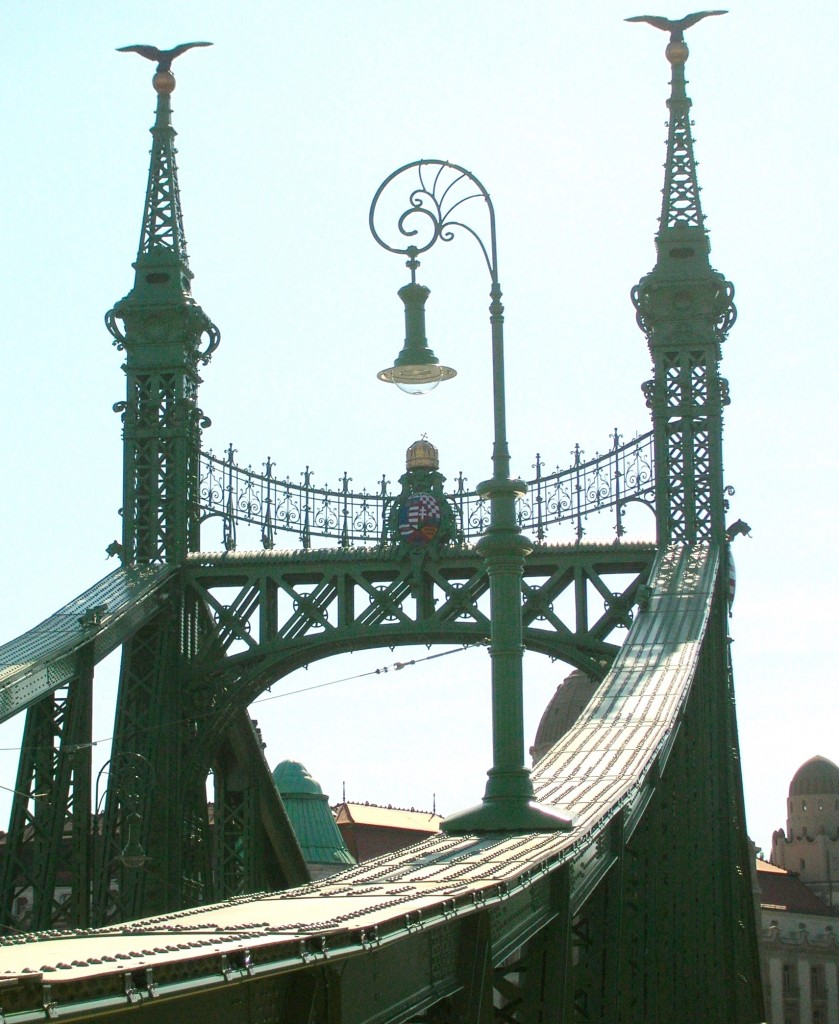
The Liberty Bridge was originally built in 1896 and is topped by bronze Turuls – birds from Hungarian mythology.
During the Soviet occupation, the site of the Liberty Statue also included sculptures of Red Army soldiers. Those sculptures were removed in 1992, however, and placed at Szobor Park.
Numerous other symbols of Soviet dominance have been moved to Szobor Park (Memento Park) – some 42 pieces of art. The area is jokingly referred to as the “Disneyland of Communism.” On display are huge figures of Lenin and Marx, statues of Hungarian workers happily shaking hands with Soviet soldiers, and more than a few hammers-and-sickles.
Also on view are several Trabant cars. Originally manufactured in what was once East Germany, the models at Memento Park may be the last in existence. Propaganda posters and old secret police surveillance methods are exhibited as well. Memento Park provides a direct bus from several locations in Budapest along with guided tours. The park’s well-organized and entertaining website offers additional information and discounted tickets.
THE OLD FISHERMAN’S WALK
Each evening in Budapest, locals and visitors gather to stroll along the steps and promenade of the Halászbástya (Fisherman’s Bastion) – a broad terrace on the very edge of Buda Hill – with gorgeous, sweeping views of the Danube, Margaret Island and Pest.
A cluster of white turrets and columns marks the perimeter of the terrace. Stone railings line balconies and walkways – all of which are supported by an elaborate concoction of arches. The Bastion takes its name from the guild of fishermen that once defended this stretch of city walls in the Middle Ages. Theirs must have been a solemn and lonely task, marching along these ramparts to keep watch, centuries ago.
Now, guitars and violins provide musical accompaniment for one of the most romantic views imaginable. And on the last night I’m in Budapest, a full moon shines on the gleaming white marble. The light seems to meld the angles and columns of ancient buildings with contemporary sounds and modern expressions.
Looking at the magnificent view in the semi-light, time stands still. I’m not quite in the present, haven’t gone back to the past. Neither east nor west of Greenwich. Just somewhere in Budapest. A place and time unique to itself.


